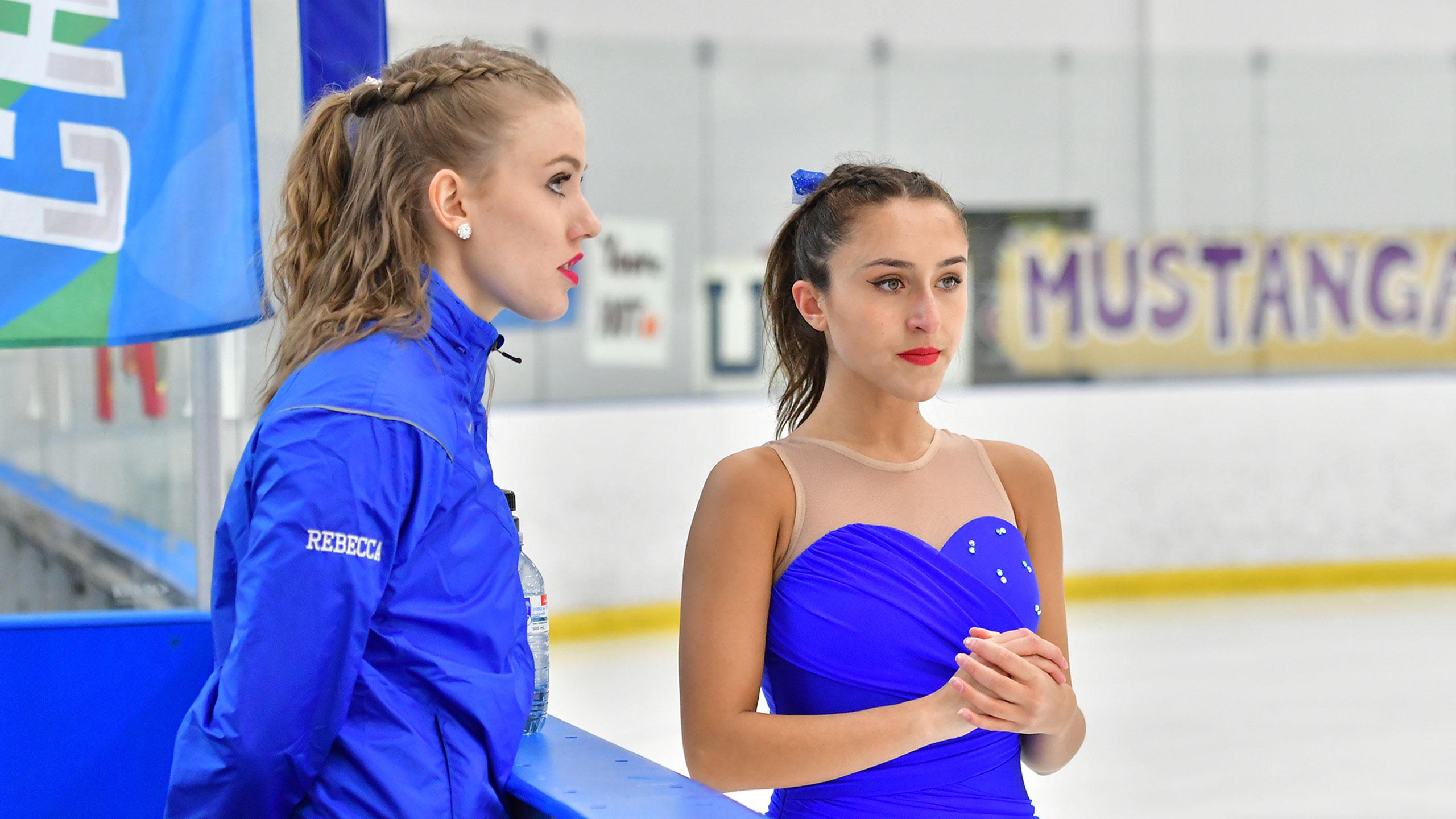By Elisabeth Rositsan
Feminine and aesthetically beautiful—these are likely the words that come to mind when you think about figure skating.
But behind the beauty and grace are the hours of training, stress, and injuries that come with the sport that we rarely ever hear about.
Right here at Ryerson, we’re home to one of the top figure skating programs in Ontario. Yet not many people know it even exists.
Last year at the Ontario University Athletics (OUA) championships the team placed fifth overall in the province. They picked up four medals, with gold in the Star 10 Freeskate, silver in the men’s Freeskate and Dance Fours event and a bronze medal for synchro performance.
Next month the team will be hosting the OUA championships at the Mattamy Athletic Centre for the first time since 2014.
They’ve been training four times a week for two-hour periods and when invitationals approached, they added an extra three hours outside of their regular practice times.
In addition, each skater trains outside of coordinated hours to further improve their skills and strength.
“I find that certain sports tend to downplay the amount of training and preparation that goes into a single performance because our sport is a performance sport rather than a game,” said team captain and supervisor Rebecca Bourgeois.
Figure skaters have a short window to complete their routines. Typically, programs are between two and a half to four minutes long.
“Some of the biggest misconceptions for women in figure skating [are] that we’re weak and prissy”
Throughout this period skaters have to execute perfect performances because there is no second chance and with that, the pressure kicks in.
“When I’m doing run-throughs the week of competition and I mess up a lot, it makes me feel unprepared and that causes me to stress out,” said team member Jessy Trinh. She feels the need to do well for herself, her partner and the entire team.
Having to cope with stress and extensive hours of training also comes with the risk of getting injured. Similar to any high-intensity sport, the dangers of figure skating are immense.
“Some of the biggest misconceptions for women in figure skating [are] that we’re weak and prissy,” said Bourgeois. “While we have an aesthetic component to our sport, we still have to train just as hard as any hockey player or football player in order to make it through our program.”
Figure skating is one of the few sports that doesn’t have any protective equipment. It involves sharp skates, hard ice and incredibly difficult elements like throwing themselves into the air and rotating three times.
“Our bodies are really our only equipment and protection,” said Bourgeois. “There are many injuries that are almost inevitable.”
Chris Berneck is a testament to that. He sustained an ankle injury in training, while in what skaters call a harness—someone who helps lift them while practicing jumps.
He tore six ligaments and had a partial tear in his tendon as well as a fracture. The fracture left Berneck sidelined for about seven months due to a surgical procedure.
“When I came down, my upper body kept rotating while my foot stopped and that’s how I fractured and tore everything,” said Berneck.
The injury occurred right before the Olympic trials and nationals, the worst possible timing for Berneck.
“My physiotherapist worked on my ankle for three weeks, trying to reduce the swelling and the overall injury,” said Berneck.
Desperately wanting to compete, he received three cortisone injections and had his foot taped before skating because when he was off the ice his foot was in a cast.
“I skated on this foot for three and a half months after I had injured it”
Despite the setback, Berneck finished his season strong. He managed to be an alternate for the Olympic games and finished in third place at the Grand Prix in Vienna, Austria.
“The overall recovery time was six months after the season. Obviously, skating on a broken foot slowed down the healing process. I skated on this foot for three and a half months after I had injured it, and then needed to take six months off the ice to heal after all of the procedures,” said Berneck.
Bella Larkin, co-captain of the team, suffered two injuries during practice, with both requiring surgery, setting her back six months to a year each. The first injury was a turning point for the young skater as it prevented her from jumping.
“The surgery was around six years ago and there are still elements I struggle with,” said Larkin. Both times, the recovery process took a toll on her mentally, more than any training or practice schedule she’s endured.
While having to deal with the stress and risk of injuries that come with the sport, Ryerson’s figure skating team has also been adjusting to not having a head coach for the second straight year.
The transition into an “organization run by students” was not easy by any means.
For Bourgeois and Larkin, they’ve taken time out of their own schedule to meet with Ryerson, set up a weekly ice schedule and make sure all members on the team are registered to compete.
To be able to afford skating with the team, it’s required some skaters to work multiple jobs.
This February, Ryerson’s figure skating team will go to work at the OUA championships. While doing so, they’ll endure the misconceptions the sport carries. They don’t get credit for the dangerous jumps attempted and successfully completed.
But despite all of that, they’ll be putting on a show whether you appreciate them or not.











Leave a Reply